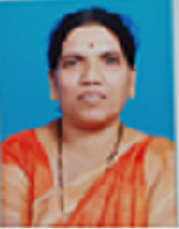Speakers
Mette Pedersen
University of Copenhagen DenmarkTitle: Genetics and voice production in childhood and adolescence a review
Abstract:
Adolescence is a challenging time of change in voicing, normally and in pathology. An increased focus on voice production in relation to genetics can expand our knowledge of the onset of puberty and voice change. Our aim with this review was to connect research of genetics to voice production in adolescence. We need further understanding of the developmental background of voice in childhood and adolescence, because many genetic multi handicaps include voice production. Genetic development related to voice
production was the focus in a search made by the Royal English Society of Medicine, with only a few results. We supplemented with references to genetic studies of adults and animals as well as adjacent areas of voice production. The genetic development of voice production is steered from the hypothalamus probably related to growth hormone. The genetic voice production in adults form the basis for understanding development. Some research results were found related to the pubertal steps. The findings are important in the future, using advanced voice analysis and artificial intelligence methods in patients with Multi handicaps.
Biography:
She is 2017 President and Chair at the Seventh World Voice Consortium Congress, Copenhagen, Denmark. On 2015 Honored Professor of Medicine, International Bibliographical Centre, Cambridge. 1997 Thesis title: biological development and the normal voice in puberty, Gentofte University hospital ENT Dpt. lead by prof. M.Tos and Oulu University, Phoniatrics, Finland. 1975 Ear-Nose-Throat specialist Copenhagen. 1965 Medical final university examination, Copenhagen.
Video Presentation
Sudha Bansode
Shankarrao Mohite College, Akluj IndiaTitle: Cancer Is Genetic Disease
Abstract:
Inherited genes can increase the likehood of breast cancer. For example , mutations of genes BRCA1 and BRCA2 ( linked to an increased risk of breast and ovarian cancers ) can inhibit the body's ability to safe-guard and repair DNA. Copies of these mutated genes can be passed on genetically to future generations, leading to a genetically- inherited increased risk of cancer.
Cancer can start almost anywhere in human body, can get multiply into trillions of cells. Tumor suppressor genes, proto oncogenes and DNA repair genes. These changes are sometimes called " drivers" of cancer. Common risk factors of cancer diet, hormones, smoking, obesity, sunlight, immune suppression and infectious agents.
There are more than 100 types of cancers based on their type of formation. Common type of cancers are breast cancer, bladder cancer, colorectal cancer, lung cancer, prostate cancer and so on. Cancer immunotherapy is being pillar of cancer treatment, alongside surgery, chemotherapy, and radiation. The target audience for this conference is basic and translational scientist and clinicians, both senior and young investigator that want to have a broad and detailed overview of the most recent advances in the field of cancer.
Biography:
Dr. Sudha Bansode is a associate professor in Zoology at Shankarrao Mohite College, Akluj, Maharashtra State, India. Recently she has completed her Post-Doctoral studies at University of California, Riverside, USA. She is a active researcher & passionate teacher in India. Still she has been published above 35 research papers in international journals and she is interested on Bone Research . Also she has honor of distinguished Editiorial Board Member of several international journals . She is a own author of "Textbook Histlogical Techniques" & "Outlines of physiology". And now she is a university recognized research guide for Ph.D students in India. She invited Indian speaker of "Oxford Symposium" on 27-29 August, 2014 at Balliol College, Oxford, UK & CELL SIGNALING & CANCER THERAPY - International conference at Double Tree , Hilton Chicago on 27-28 September 2017, Genetics ,Cell and Gene Therapy at Amsterdam, Netherlands. She was academic visitor of Bangkok-Thailand, Colombo- Sri Lanka, Daira-Dubai UAE and Toronto Canada. Her recent intellectual interaction is with Many international professional groups.


